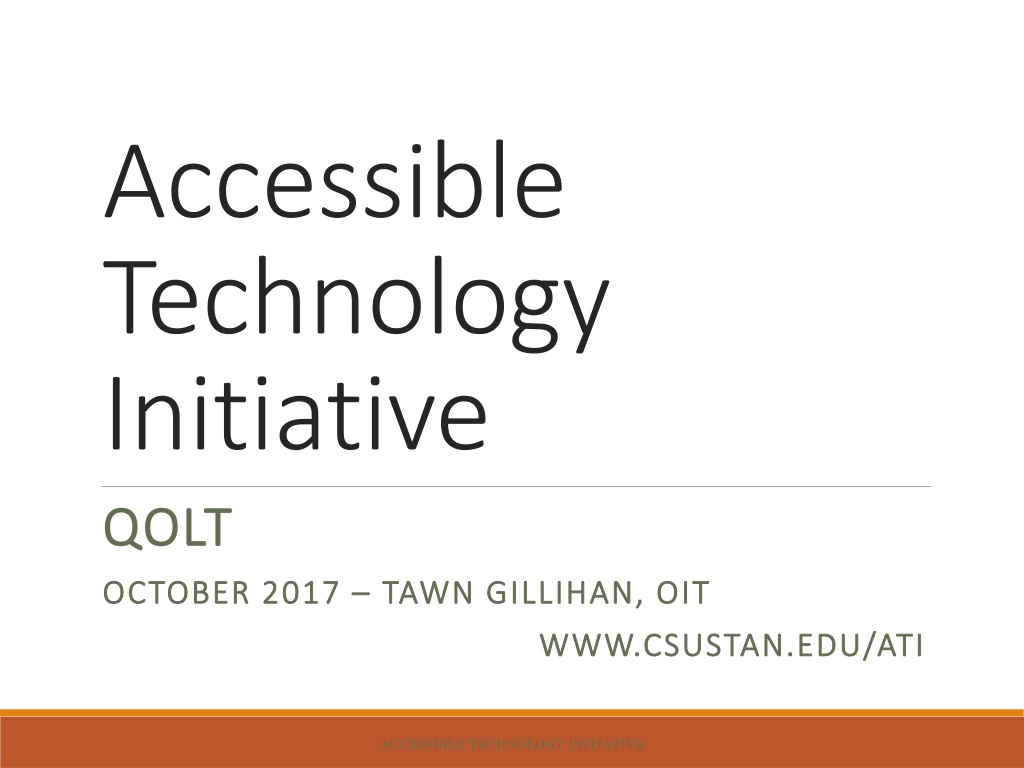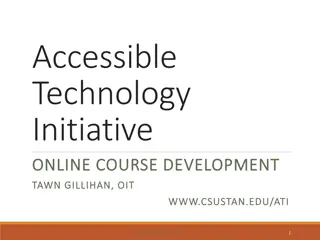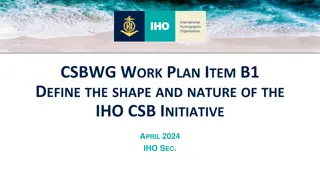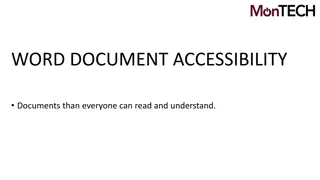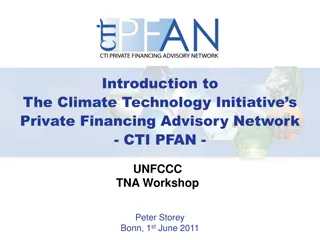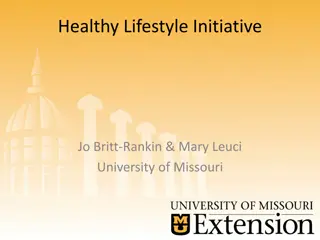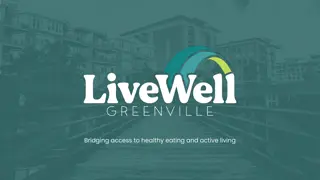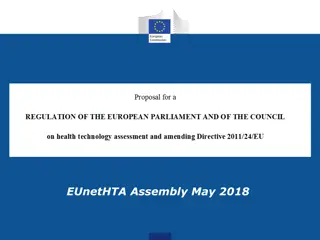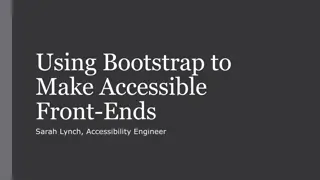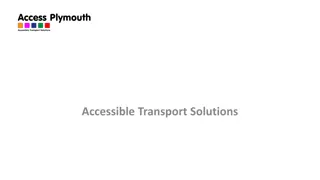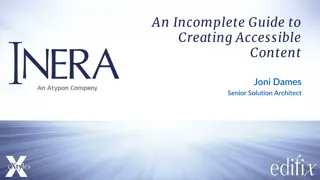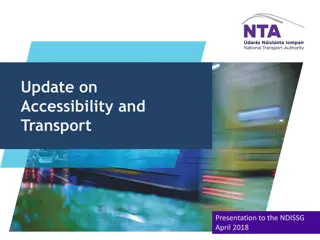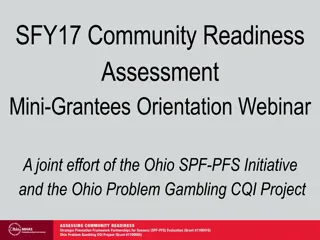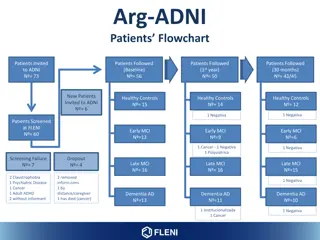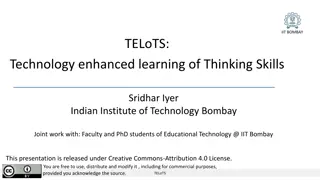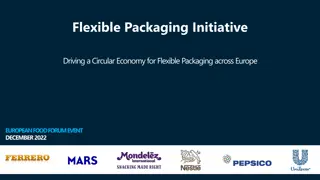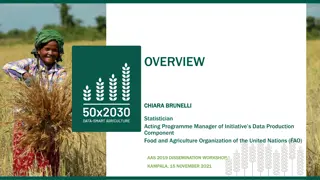Accessible Technology Initiative Overview
This content provides an overview of the Accessible Technology Initiative (ATI) at CSU Stanislaus, emphasizing the importance of promoting accessibility and usability in technology. It covers the need for comparable functionality, affordability, timeliness, and seamless delivery. Additionally, it highlights laws, policies, and initiatives like ADA, Section 508, and CSU Executive Orders that aim to ensure accessible technology for all, including individuals with disabilities. The content also discusses different types of disabilities, both apparent and non-apparent, and the importance of removing barriers for diverse learners in higher education.
Download Presentation

Please find below an Image/Link to download the presentation.
The content on the website is provided AS IS for your information and personal use only. It may not be sold, licensed, or shared on other websites without obtaining consent from the author. Download presentation by click this link. If you encounter any issues during the download, it is possible that the publisher has removed the file from their server.
E N D
Presentation Transcript
Accessible Technology Initiative QOLT QOLT OCTOBER 2017 OCTOBER 2017 TAWN GILLIHAN, OIT TAWN GILLIHAN, OIT WWW.CSUSTAN.EDU/ATI WWW.CSUSTAN.EDU/ATI ACCESSIBLE TECHNOLOGY INITIATIVE
Accessible Technology Accessible Technology Our use of technology must provide comparable functionality, affordability, timeliness, and must be delivered in as seamless a manner as possible.
Why Promote Accessibility/Usability? Why Promote Accessibility/Usability? Our use of technology must provide comparable functionality, affordability, timeliness, and must be delivered in as seamless a manner as possible. Student Success Laws & Policies Legal Action
ADA Laws & ATI Policies The Americans with Disabilities Act of 1990 (ADA) Section 508 of the 1973 Rehabilitation Act CSU Executive Order 926 CSU Coded Memos AA-2015-03, AA-2014-08
Section 504 vs. 508 Section 504 Disability Resource Services Individual Student Accommodation Not Shared Section 508 Accessible Technology Initiative Institution-Wide Accessibility Removes Barriers for a Diverse Group of Learners
Understanding Disability
Apparent Disabilities Apparent Disabilities Vision Loss & Blindness Hearing Loss & Deafness Mobility Limitations Typically registered with DRS 6% of CSU enrollment
Non Non- -Apparent Disabilities Apparent Disabilities Traumatic Brain Injury PTSD Learning Disability Mental/Emotional Health Issue Chronic Health Condition Often undisclosed Often unregistered with DRS 10% of all students in higher education
Additional Additional Limitations Limitations Different learning styles Language/Culture Limited access to technology Aging-related limitations Distance learning Unaware of resources Stress
Accessible Instructional Materials
What Are the Challenges? What Are the Challenges? For Instructors: Late notice from students Unrecognized non-apparent disabilities Limited time to remediate documents and multimedia More...
ATI & Instructional Materials ATI & Instructional Materials Timely adoption of textbooks and other instructional materials Post an accessible syllabus and course materials to the LMS List your course s media/technology tools requirements early Captioning for videos and podcasts
Best Practices for Online Courses Syllabus Include a disability statement in the syllabus Notify students of any online conferencing tools used in the course Use consistent file types and multimedia tools Identify the preferred web browser if appropriate Provide information on student resources
Best Practices for Online Courses Instructional Materials Select course materials that have electronic formats Submit course booklists well ahead of time Be aware of conversion timelines for print materials (six weeks) Make sure electronic documents are not scanned images of text
Best Practices for Online Courses Universal Design for Learning Use large visuals, such as font size and images, on slides Include ALT tags on ALL visual elements Caption or provide a transcript for all audio or video files Create accessible Word/Excel/PowerPoint documents
Universal Design for Learning
Universal Design for Learning The concept of Universal Design for Learning advocatesthat developing course materials that are universally accessible are enrichments that can benefit all learners. Works for the widest pool of users Easier to design it well the first time than to go back and fix it People with disabilities don t have to wait or ask for special help Benefits everyone, even people without a disability
Examples of Inaccessible Design COLOR BLINDNESS COLOR CONTRAST/FONT SIZE Look at the red bar Category 1 6 5 4 Category 2 3 2 1 0 Category 3 Category 1 Category 2 Category 3 Category 4 Series 1 Series 2 Series 3
Examples of Accessible Design COLOR BLINDNESS COLOR CONTRAST Look at the dotted bar Category 1 6 5 4 Category 2 3 2 1 Category 3 0 Category 1 Category 2 Category 3 Category 4 Series 1 Series 2 Series 3
Equally Effective Digital Content Accessible for a screen reader software application, OCR, and assistive hardware technologies
Assistance & Information
Resources for Faculty Resources for Faculty OIT Learning Services Disability Resource Services Library Bookstore - FacultyEnlight Tool ATI Website www.csustan.edu/ati
Learning Services Learning Services Captioning Transcripts Alt Media Scanning Slideshows Audio/Sound Clips Video editing Audio/Video DVD creation Graphic design
Resources for Students Resources for Students For Academic Help Tutoring Center Writing Center Lynda.com Program for Academic & Career Excellence (PACE) Student Support Services Faculty Mentor Program (FMP) For Help with Apparent and Non-Apparent Disabilities Disability Resource Services (DRS) Psychological Counseling Services Student Health Center (SHC) Library Assistive Technology
Separate but Equal is an Issue of Social Justice The failure to address issues of accessibility for persons with physical, sensory, and cognitive disabilities ultimately threatens to segregate people with disabilities as the permanent second class citizens of the information age.
Summary Plan for a diverse group of users with special needs to include as many users as possible
Usability: A Clear Path for Everyone Student: Could you please shovel the ramp? Adult: All these kids are waiting to use the stairs. When I m done with the stairs, I ll clear the ramp for you. Student: But if you shovel the ramp first, we can all get in.
From Where I Sit Video Series Kelvin Crosby, (San Diego State, 2013) is a 6 minute video about a deaf/blind student in the classroom, and information on accessible instructional materials for the classroom.
From Where I Sit Video Series The Stories and Faculty Response
For More Information & Assistance Visit the new ATI website at http://www.csustan.edu/ati Contact the ATI Coordinator Tawn Gillihan Email: tgillihan@csustan.edu Phone: (209) 667-3470 Office: L151G
